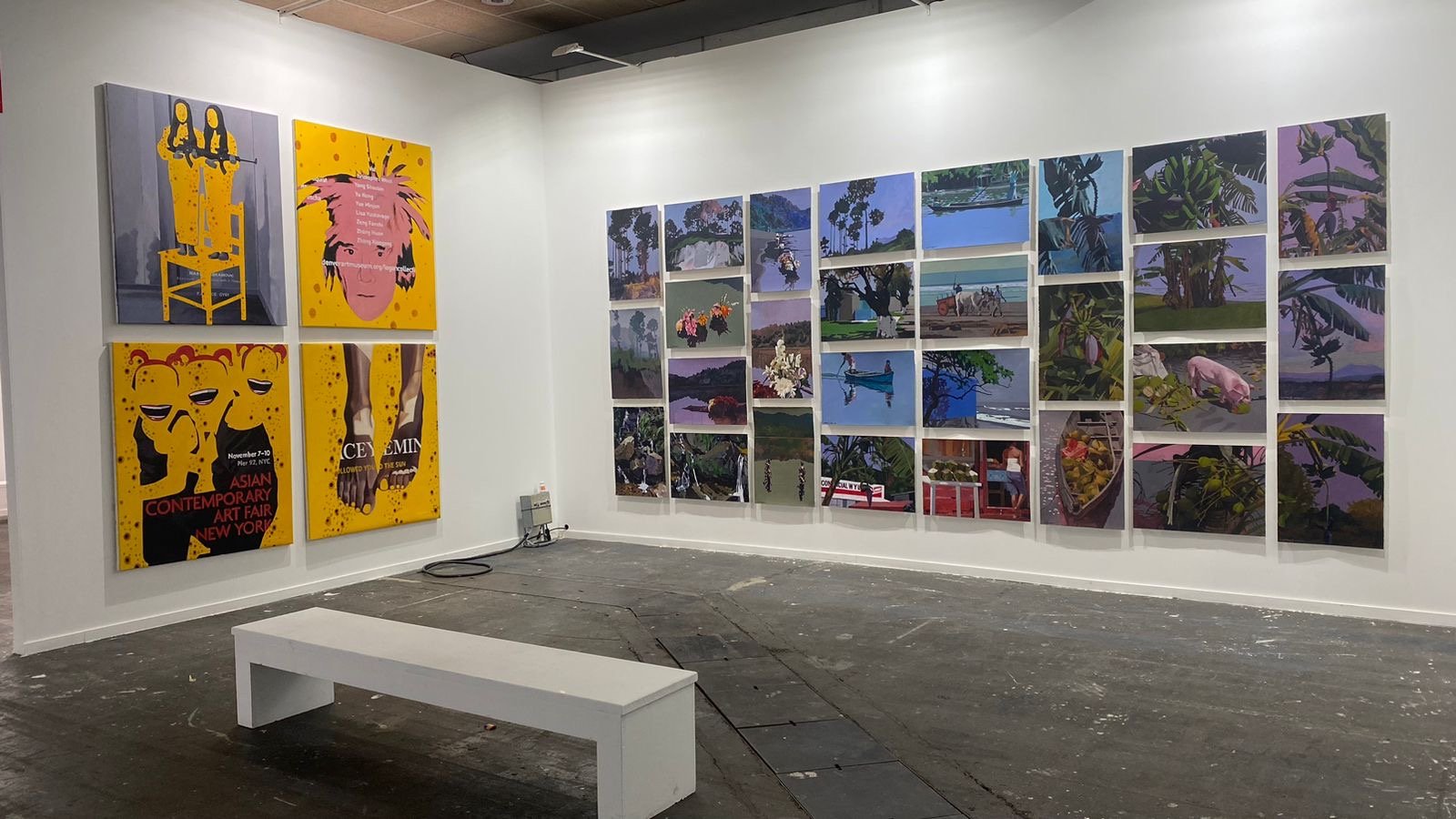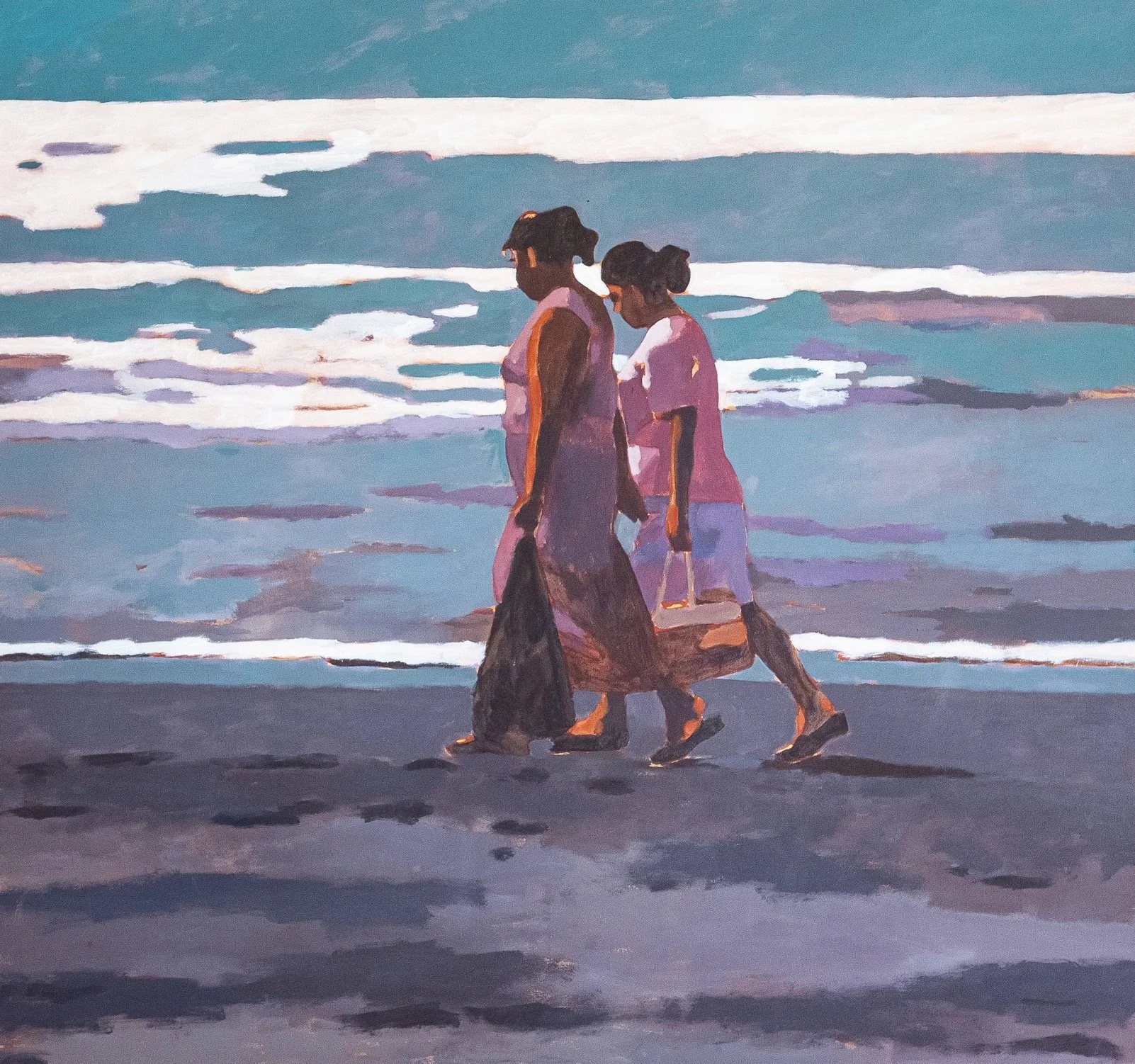ESPAÑOL | ENGLISH
MOISÉS BARRIOS
GUATEMALA, 1946.
Since the 1980s, Moisés Barrios has been committed to painting as a means to address themes that have been fundamental in the construction of the history of his country, Guatemala. One of those themes are natural resources—water and land as environments that ensure life, or become discursive epicenters of great political phenomena. He studies events that emerged from the processes of colonization, independence and nation building, and puts them in context with recent sociopolitical phenomena.
As a great container of that historical memory, landscapes have been one of the most recurrent motifs in the artist's career. Barrios considers them as an environment that exposes the symbols of the nationalist, utilitarian or power-based visions that have shaped it. When observing the work of Moisés Barrios, and specifically his landscapes, there is something in his way of painting that dislocates the legacy models of the tourist postcard, those that, historically, provided a regularized notion of contemplating and naming the "Guatemalan landscape" as one of the country's great local symbolic values.
The relationship that Moisés Barrios established with landscape painting and nature began with his frequent trips along the Pacific coast of Guatemala, El Salvador, Costa Rica and the Caribbean. As a person who was acquainted with the sea at 17 years old, that landscape became an essential reference for his artistic work. In the tropical-literary order or as a metaphor for violent natural phenomena such as storms and hurricanes, the landscape was the generator of works that constantly referred to the abundance, misfortunes and barbarities of the region.
PROJECTS & EXHIBITIONS
NEWS





